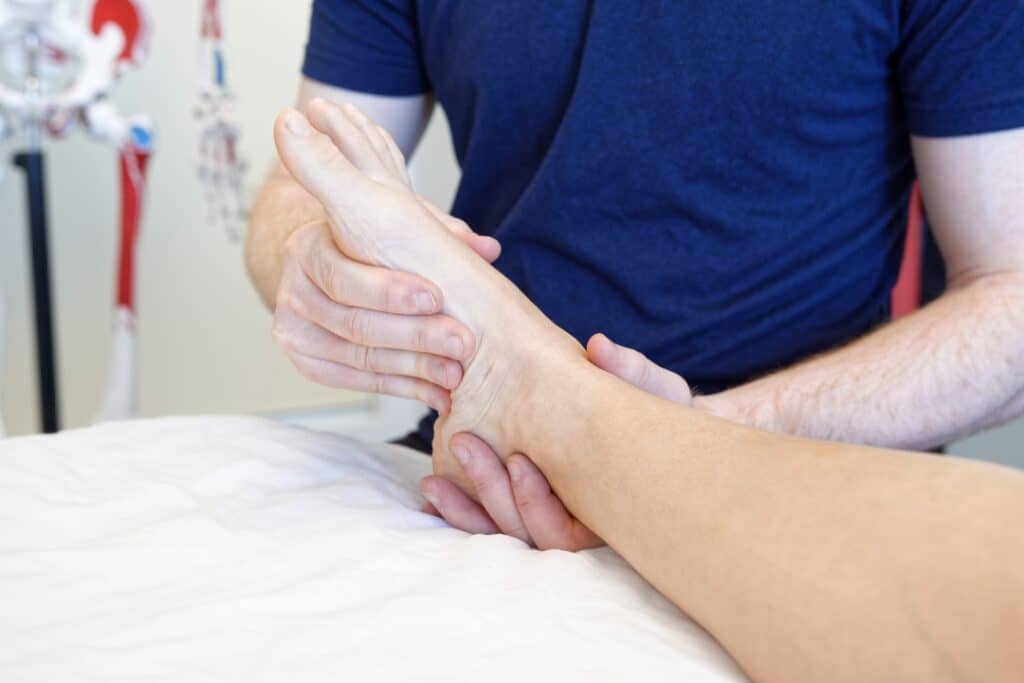Osteopathy is a holistic healthcare approach that has been gaining popularity in recent years for its potential to address a wide range of health issues. Rooted in the belief that the body has an innate ability to heal itself, osteopathy focuses on restoring balance and alignment to enhance overall well-being. In this comprehensive guide, we’ll explore the numerous benefits of osteopathy and how it can positively impact your health.
-
Pain Management and Relief:
One of the primary reasons people turn to osteopathy is for pain relief. Osteopathic practitioners use hands-on techniques to assess and treat musculoskeletal issues. Whether it’s chronic back pain, headaches, or joint discomfort, osteopathy can provide effective pain management without relying on medications.
-
Osteopathy Improves Posture and Alignment:
Osteopathy emphasizes the importance of proper body alignment. Through gentle manipulation and stretching, we can help correct misalignments in the spine and other parts of the body. This can lead to improved posture, reduced strain on muscles and joints, and enhanced overall mobility.
-
Enhanced Mobility and Flexibility:
Osteopathic techniques can increase joint flexibility and range of motion. Whether you’re an athlete looking to improve performance or someone experiencing stiffness due to aging, osteopathy can help you move more freely and comfortably.
-
Stress Reduction:
Osteopathic treatments promote relaxation by reducing tension in the body. This relaxation response not only alleviates physical stress but can also have a positive impact on mental well-being. As stress levels decrease, anxiety and mood disorders may improve.
-
Support for Various Health Conditions:
Osteopathy is known for its holistic approach to health. It doesn’t just treat symptoms but considers the body as a whole. This approach can be beneficial for individuals dealing with a wide range of health conditions, including digestive issues, respiratory problems, and even sleep disorders.
-
Enhanced Circulation:
Improved blood flow and lymphatic drainage are often associated with osteopathic treatments. Enhanced circulation can help the body’s natural healing processes, reducing inflammation and promoting overall wellness.
-
Complementary to Other Therapies:
Sessions can complement other healthcare treatments and therapies. It’s often used alongside conventional medicine, physical therapy massage therapy, or acupuncture to enhance the overall effectiveness of treatment plans.
-
Personalized Care:
Each individual is unique, and osteopathic treatment plans are tailored to meet specific needs. We take the time to understand your health history, lifestyle, and goals, providing personalized care that addresses the root causes of health issues.
-
Preventive Healthcare:
Osteopathy isn’t just about treating existing health problems; it’s also about preventing future issues. By maintaining proper alignment and balance in the body, you can reduce the risk of injuries and chronic conditions down the road.
-
Safe and Non-Invasive:
Treatments are safe and non-invasive. They do not involve forceful manipulation of spine or other joints. Osteopathy is a viable option for individuals who prefer natural and minimally invasive approaches to healthcare.
-
Individual Empowerment:
Osteopathy empowers individuals to take an active role in their health. Through education and guidance from osteopathic practitioners, patients learn about their bodies, potential health issues, and strategies for maintaining optimal well-being.
-
Long-Term Benefits:
Osteopathy doesn’t just provide short-term relief; it often yields long-term benefits. By addressing the root causes of health problems and promoting overall balance, osteopathic treatments can have a lasting positive impact on your health and quality of life.
-
Patient-Centered Approach:
Osteopathic practitioners prioritize patient-centered care. They listen to your concerns, involve you in treatment decisions, and work collaboratively to develop a personalized treatment plan that aligns with your goals and preferences.
-
Support for Emotional Well-Being:
Physical and emotional well-being are closely connected. As osteopathy reduces physical discomfort and promotes relaxation, it can have a positive influence on emotional health, making it a valuable component of holistic mental well-being.
-
Enhanced Quality of Life:
Ultimately, the many benefits of osteopathy contribute to an improved quality of life. Whether it’s enjoying a pain-free day, feeling more energetic, or experiencing reduced stress and anxiety, osteopathy can help you live life to the fullest.
Osteopathy offers a holistic and patient-centered approach to health and wellness. Whether you’re seeking pain relief, better mobility, stress reduction, or support for various health conditions, osteopathy has the potential to enhance your overall well-being. By promoting the body’s innate healing abilities and focusing on individualized care, osteopathy is a valuable addition to the world of healthcare, providing benefits that can improve your quality of life. For more information about Osteopathy, please follow this link
Incorporating osteopathy into your healthcare regimen can be a step toward a healthier, happier, and more balanced life.
Resources:
https://www.ncbi.nlm.nih.gov/pmc/articles/PMC9143587/
https://www.journalofosteopathicmedicine.com/
https://www.medicalnewstoday.com/articles/70381


